A must have in a modern office: eight spaces that create a great work experience

The pandemic made people favour their homes. How to entice workers to return to the office has become a million-dollar question. Companies around the world have begun to rack their brains over possible amenities to offer their employees, in addition to dining spaces and cafés. They are looking for ways to design an office that is not just a place to work efficiently, but also a holistic environment where the act of simply being present offers a multi-faceted experience.
We have entered an era where the creation of value-added amenities is no longer optional for employers. In 2022, Gensler conducted a workplace survey in the United States, interviewing more than 2,000 office workers. Their answers showed that the eight spaces presented below provide the best experience of going to work.
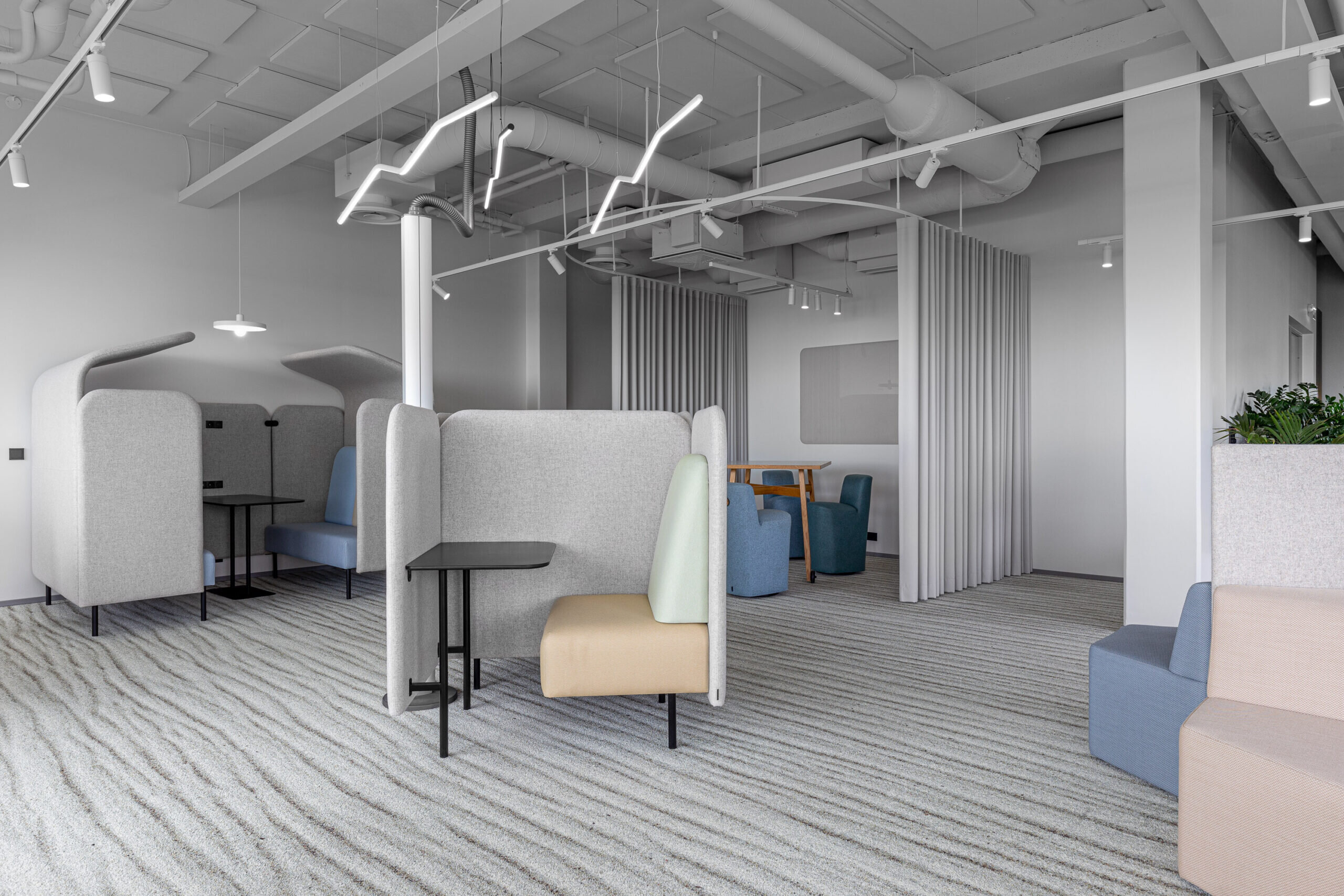
We have entered an era where the creation of value-added amenities is no longer optional for employers. Photo: Intuit
Spaces for individual work
Most people prefer to concentrate in a room without noise, visual distractions or other disruptions. A classic open office fails to provide such conditions. According to the Gensler survey, individuals who require peace and privacy to delve deeper value the four spaces designated for individual work the highest.
1. Quiet Zone
Creating a quiet zone for work is usually a simple matter of agreement and may not require any physical reorganisation of the space. As long as everyone sticks to the rule of no loud (phone) conversations in the quiet zone, this might suffice. The noisier groups will certainly find a more suitable place to work in groups.
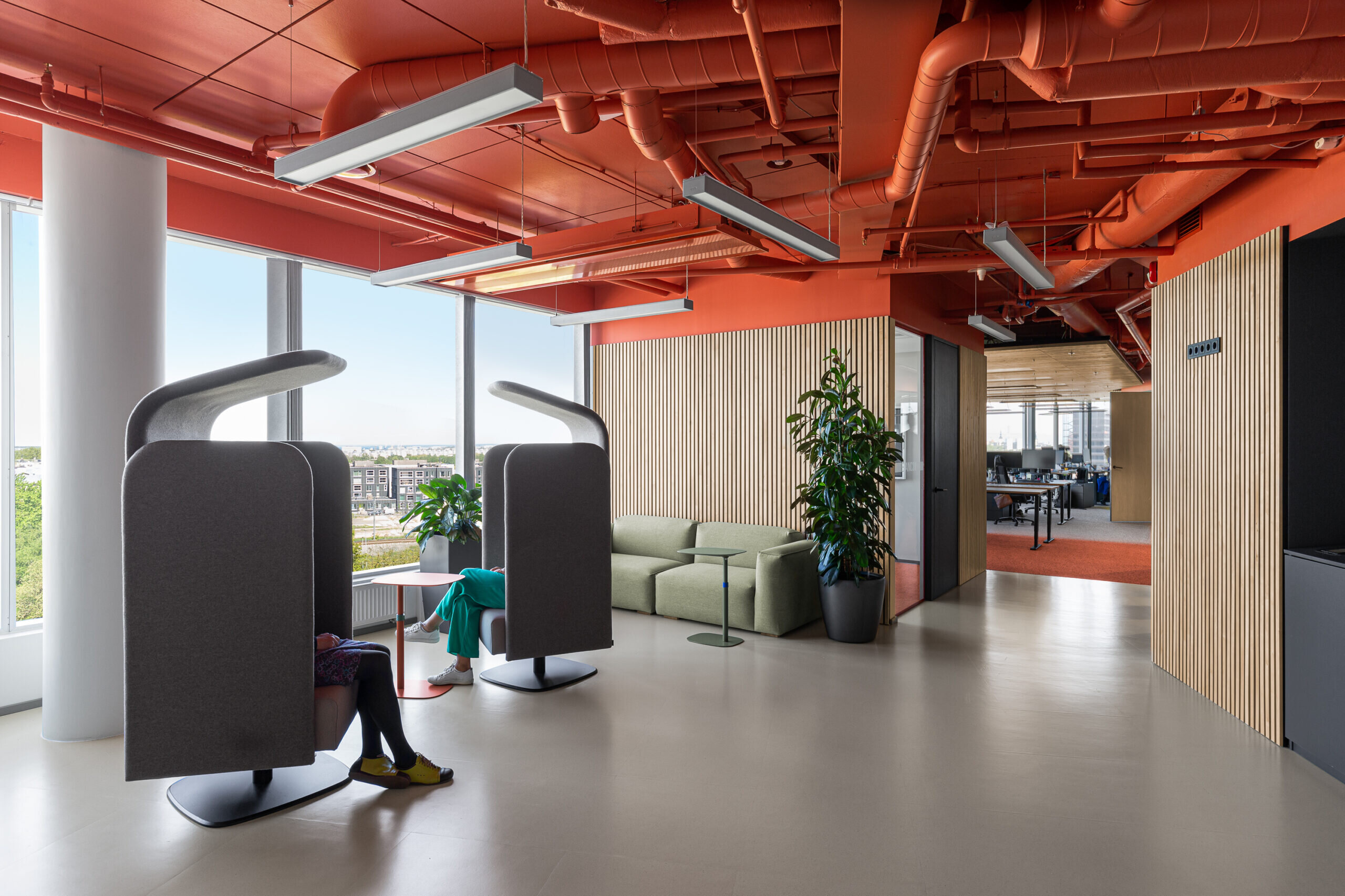
Intuit by Softrend’s August range of armchairs are surrounded by high panels covered in acoustic fabric, which also allow you to chat on the phone in a quiet zone. SK ID Solutions office in Tallinn. Design: Iseasi. Photo: Märt Lillesiim
2. Freely available individual workspaces
Freedom of choice is becoming increasingly important. Workers don’t want to be chained to one specific desk. By creating individual workstations in different corners of the office, you give employees the freedom to choose where and how they want to work. Freedom of choice has a positive effect on work efficiency.
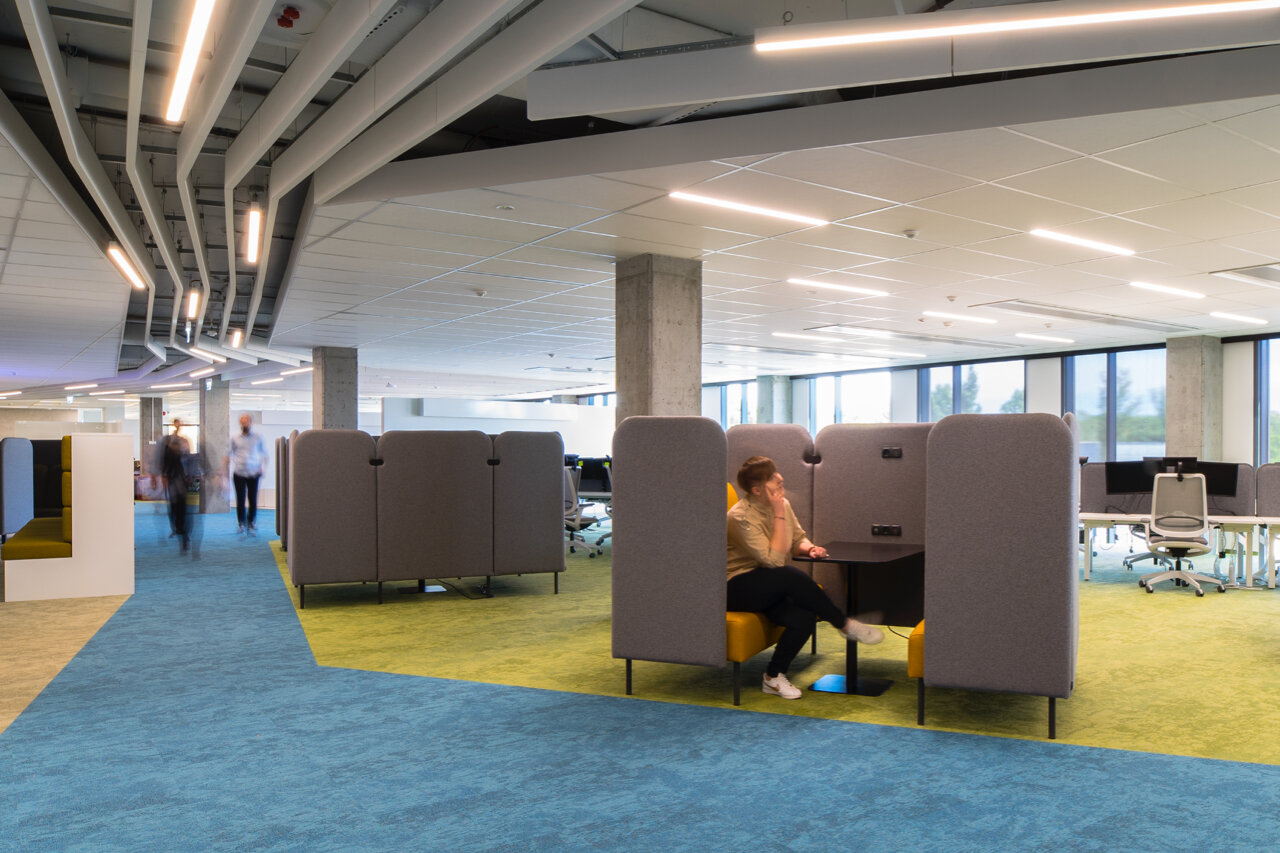
Intuit’s August Workbay ‘islands’, offering room for one person to work alone or two to chat in private. Shell Energy Poland office in Poland. Photo: Intuit
3. Focus Room
Office workers spend much of their work week alone, doing work that requires deep concentration. Most prefer to do this in peace and quiet. By creating a completely separate space in the office for immersion, furnished with noise-dampening furniture, you can provide conditions that are ideal for employees to concentrate.
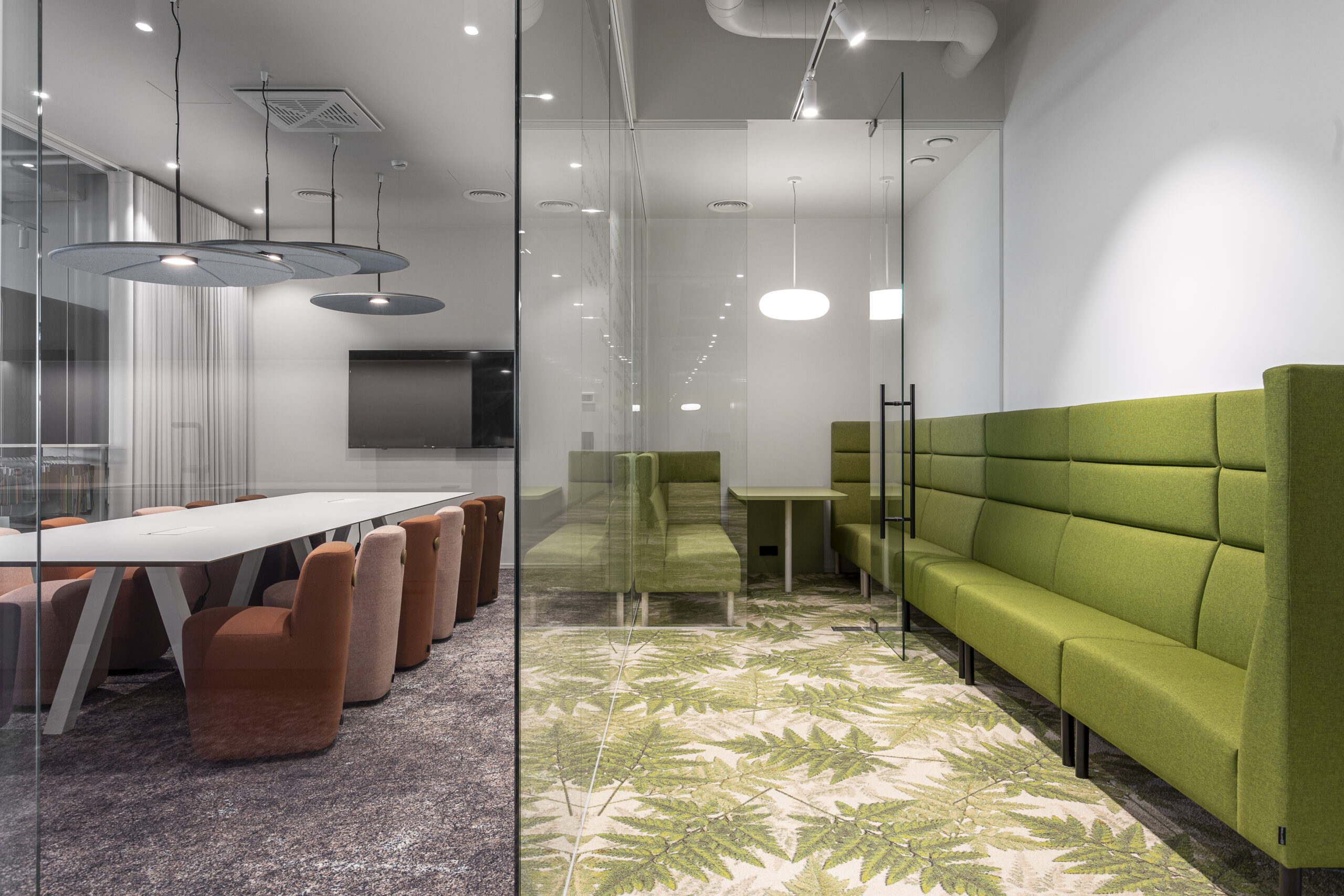
Work requiring greater concentration can be done while hidden away in a separate room with a door. Intuit’s Sofa Meeter binds the interior and the front of a room into a whole. Softrend Estonia office in Tallinn. Design: Ace of Space. Photo: Märt Lillesiim
4. Library
A library is not a conventional space in an office environment, but its inclusion is becoming more and more popular. Whereas the books themselves are not the focus. Since everyone knows that the library is a quiet place where people talk to each other in whispers, it is a good place to work undisturbed.
But a library doesn’t have to be just shelves, a big desk and chairs around it. Today, there are many more options for making the library cosy and suitable for individual work.

Spaces for working together
A conventional meeting room is suitable for conventional meetings, but not for teamwork in the modern sense. Modern teamwork requires greater flexibility and a creative environment that contains all of the tools needed to work together.
5. Collaboration zone
A one-hour meeting or half-day workshop is not always enough to ensure fruitful group work. In fact, they are almost never enough. In a modern office, teams need to be able to meet quickly at all times to discuss important issues without having to book a meeting room. A collaboration zone is specifically designed for people to visualise and consult with each other. This room should absolutely be found every office.
Instead of a separate room, collaboration zones can also be created in an open office. Furniture that is designed specifically for mobile and quick meetings means that no stand-up or flash meeting is missed.

Intuit’s Rolf meeting table and whimsical Hubert chairs are on wheels and can be moved to wherever the team needs them. Softrend Estonia office in Tallinn. Design: Ace of Space. Photo: Märt Lillesiim
6. Innovation Hub
The innovation hub brings together teams working in different fields but with a common purpose. Often, product development requires in-depth brainstorming, involving both business theorists and practitioners. In a well-equipped and furnished testing space, where everyone is at ease, a synergy emerges among people, leading to the creation of remarkable things.
Spaces for relaxation
A person’s mental and physical well-being is not only important for their personal health, but also plays a major role in their professional life. All companies want their employees to be productive, enjoy their work and remain loyal. According to the survey, these spaces had the biggest impact on workers’ well-being.
7. Rest/nap space
For some people, a short nap instead of coffee has an equally invigorating effect. Forward-thinking companies are also willing to give them that. According to Forbes magazine, short naps restore alertness, increase productivity, and reduce errors at work.
The demand for traditional recreational spaces has not gone away either. Sofas with tables, and functional shelving and support surfaces are places where employees like to relax, both alone and with colleagues. A relaxing corner, which feels like a living room at home, eases tensions and lightens the mood.
NB! Together with or instead of naps, meditation or yoga is also a good way to recharge. Some companies have even invested in a meditation room.
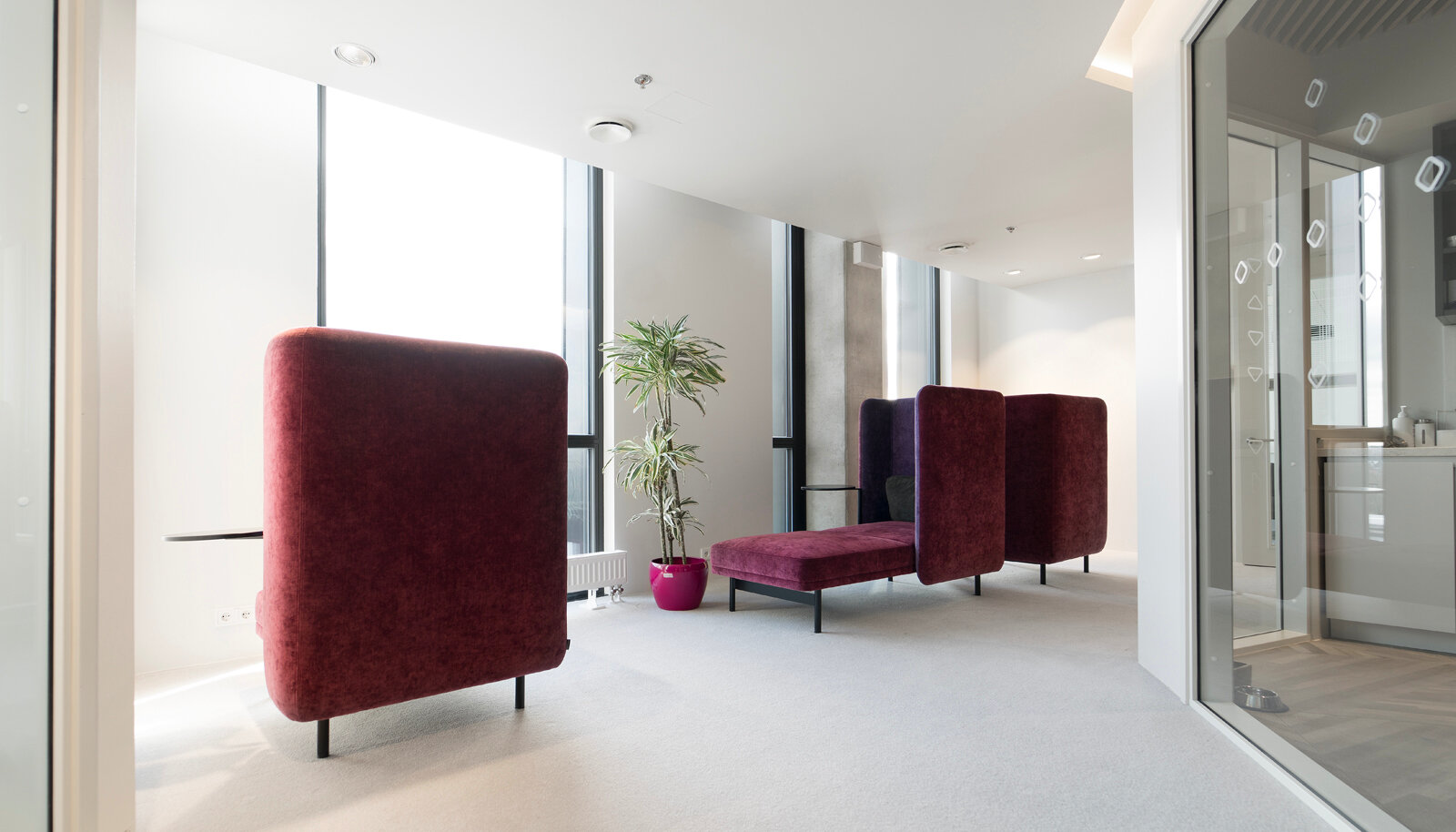
Intuit’s Frankie is a solid but private and comfortable sofa that has already found its way into many company break rooms. Pipedrive office in Tallinn. Photo: Janek Tischler
8. Outdoor workspace
The pandemic brought the importance of air quality to the forefront in our thoughts, and we all know that the freshest and healthiest air is found outdoors. So it’s worth allowing some fresh air to be experienced during working hours – whether on the roof, terrace or patio. With the right furniture, office work can also be performed outside.
It is understandable that not every employer is able to offer everything to its employees immediately. That’s why it’s worth starting with affordable efforts. Why not put your head together with the businesses around you – it’s often possible to create spaces that are shared by employees of several companies.
Successful companies understand the importance of office design
